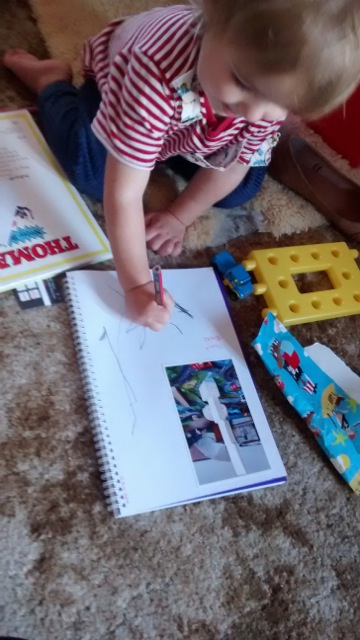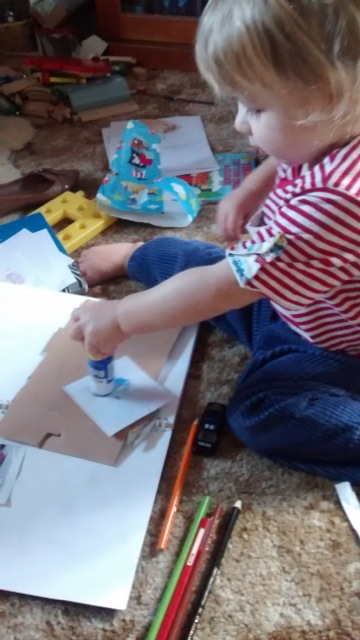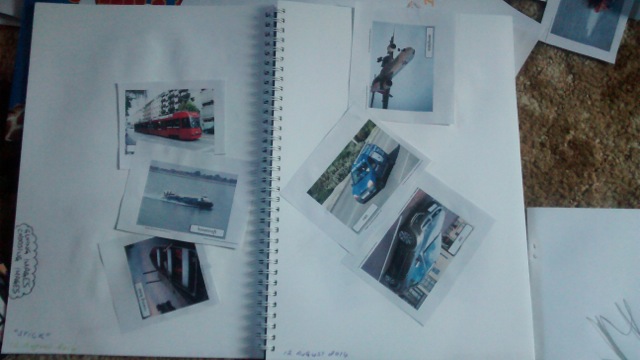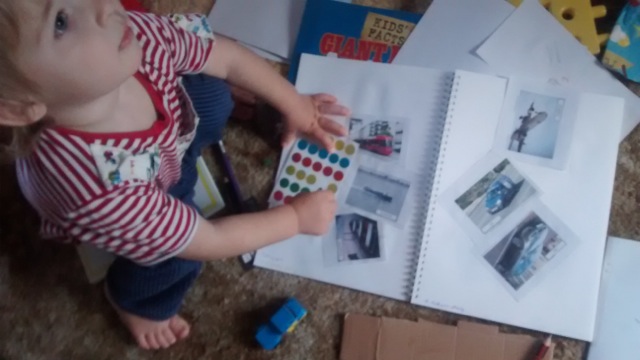Now that Squirm has turned 2, we’re starting to explore the world of project-based homeschooling (PBH). That’s a name which feels really heavy and loaded, especially when it’s used in regards to a 2 years old, but basically it’s about committing time and resources to explore a child’s interest and helping them find ways to investigate, create and share what they know.
At 2, Squirm isn’t ready to develop a full on project like some older children do. At the moment we’re at a pure exploration stage – we’re exploring his interests (things which move), we’re exploring different ways of playing and we’re exploring different mediums of creating.
This has been surprisingly easy to organise – I bought a fabric cube for keeping things together, plus a range of art supplies (as well as ones we already had) and different kinds of paper. The most important thing we got was a journal – just an art journal – which Squirm has fallen in love with.
It was the journal which taught me my first lesson about PBH.
As a teacher, one of the hardest challenges for me was letting go of control. There are definitely times when control is essential in a classroom. But there are also times when it’s ok to let the children take control – and when I did, there were often some amazing results. But it’s easy to fall back into the old habits, and when I presented the journal to Squirm, I had definite ideas about how it was going to ‘work’.
Squirm had his own ideas.
I glued in a photo of him building a tower out of blocks. He loved seeing that in the book and talked about it and drew next to it. But then he saw some pictures of vehicles which I’d printed and cut out for him to play with. And he wanted them in his journal too. And not just on the next page, but the next 6 pages. And he’d like to use the glue stick himself.
And after a bit of panicking (he’s not following ‘the plan’!), I remembered that it was his journal, not mine. That something which he had control over would mean more to him than something which I kept under strict control. So I let go.
So far, Squirm has drawn, added stickers, glued in pictures, asked me to glue in pictures, drawn on the pictures, added colour to old drawings, skipped pages and generally had a brilliant time. I add dates and notes where I can, and participate if he asks me too (mostly with sticking), but it’s his creation. And you can see him trying out different things when he draws – he moved from scribbles, to spirals, to trying to make shapes in a couple of days. He went back and looked at old pages and added to them. He spent time just looking through the journal.
It’s going to be a challenge to curb my teacher-control impulses – but I can definitely see the benefits of doing so. And I think this is going to be a fun year.

































































